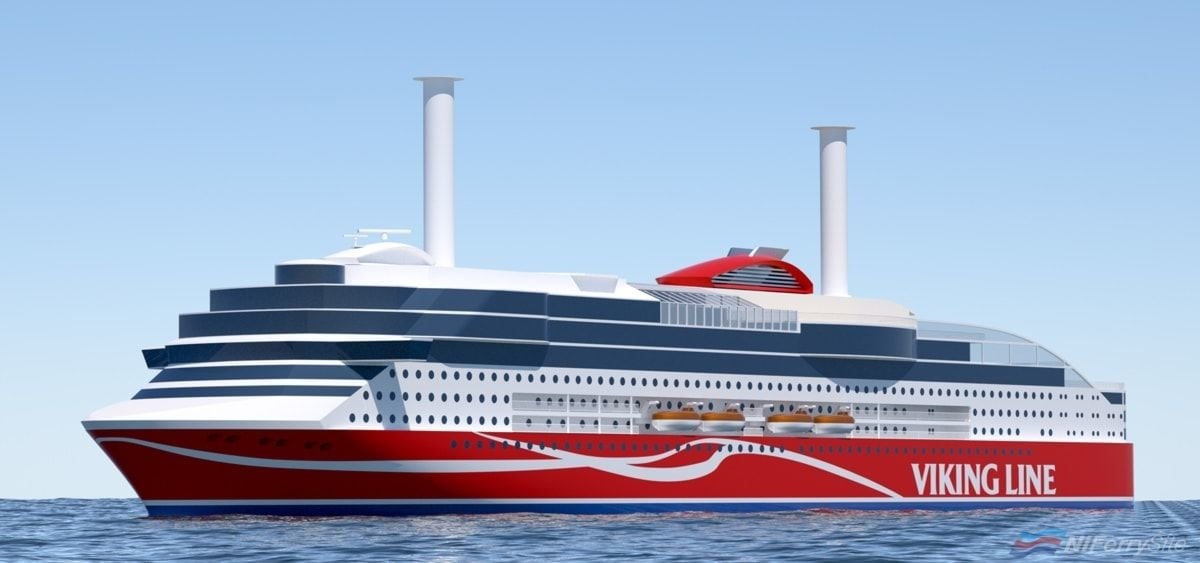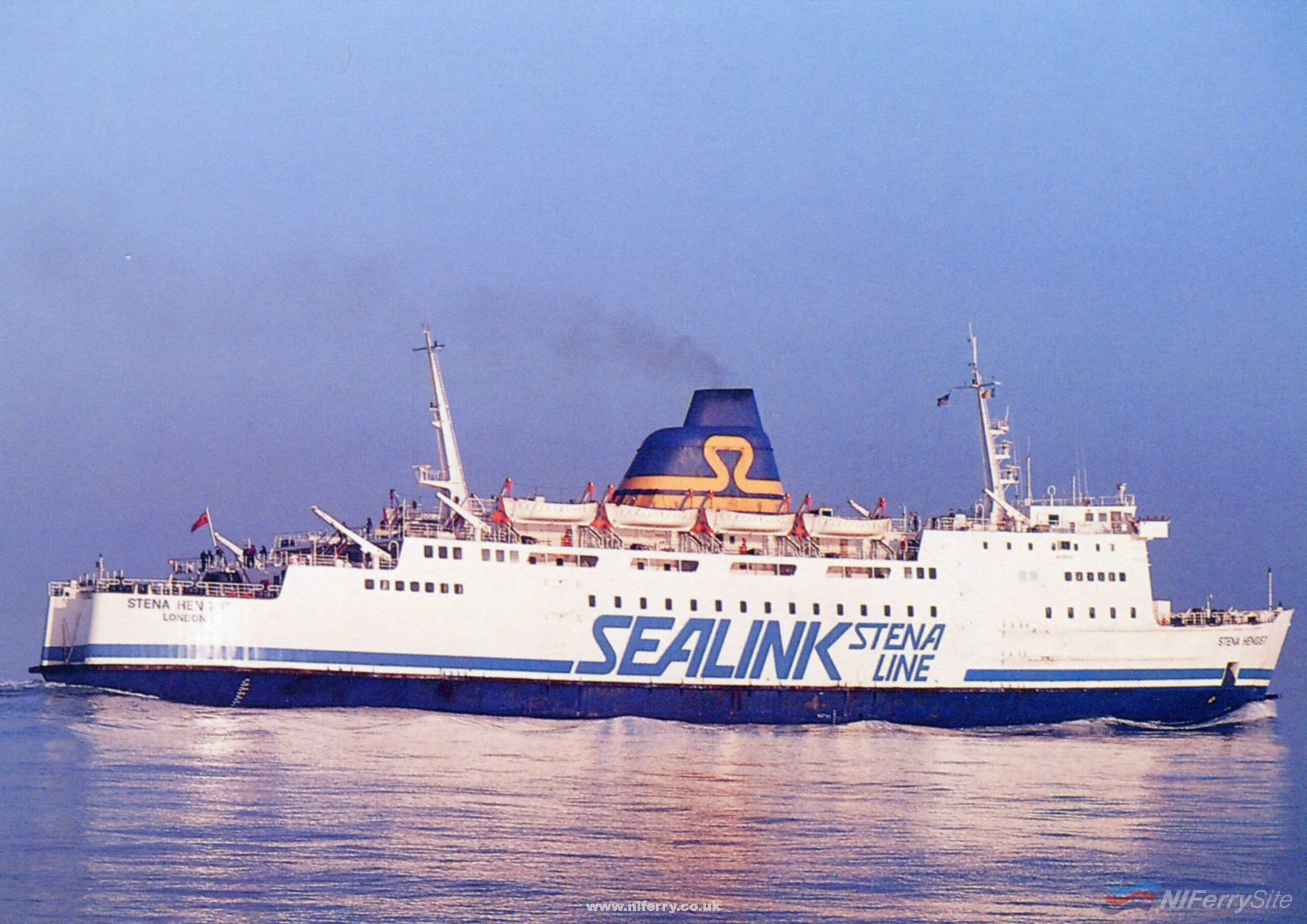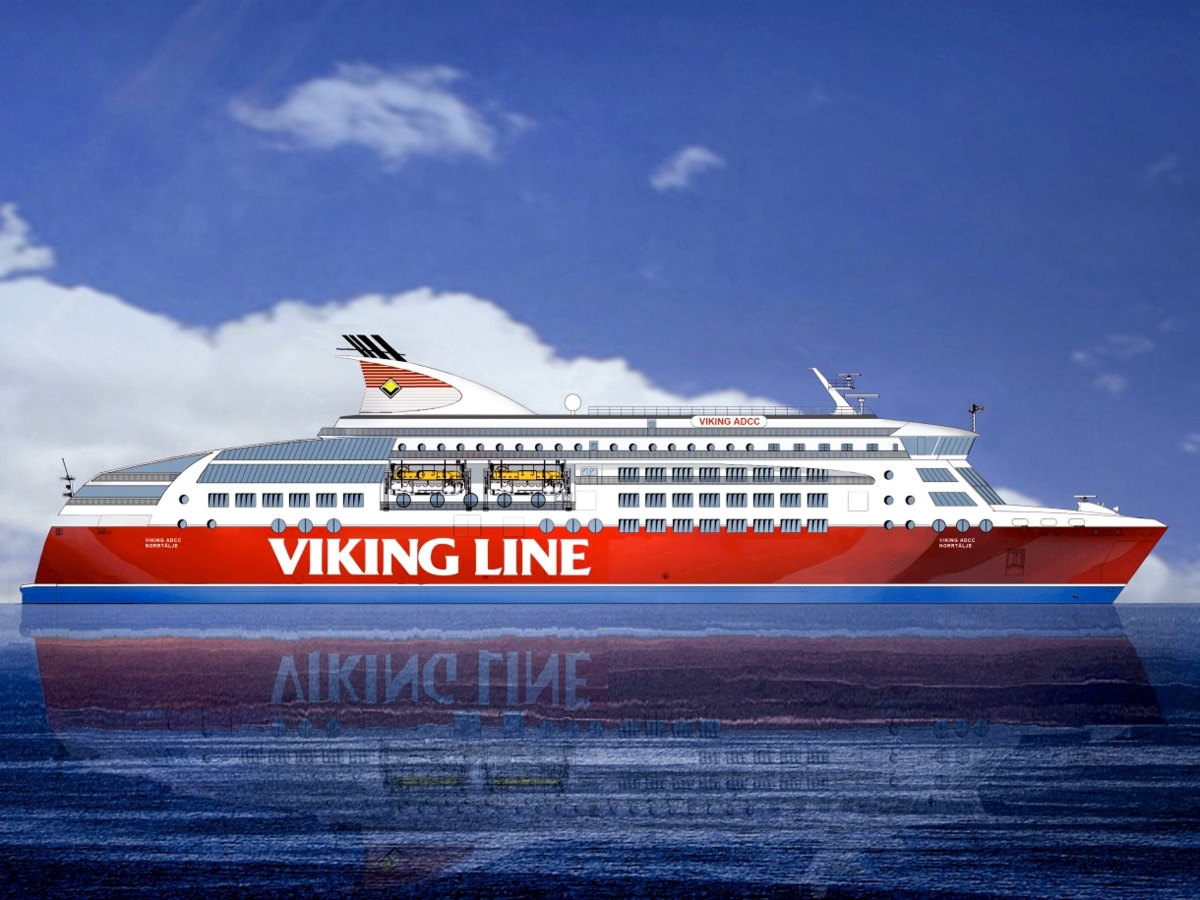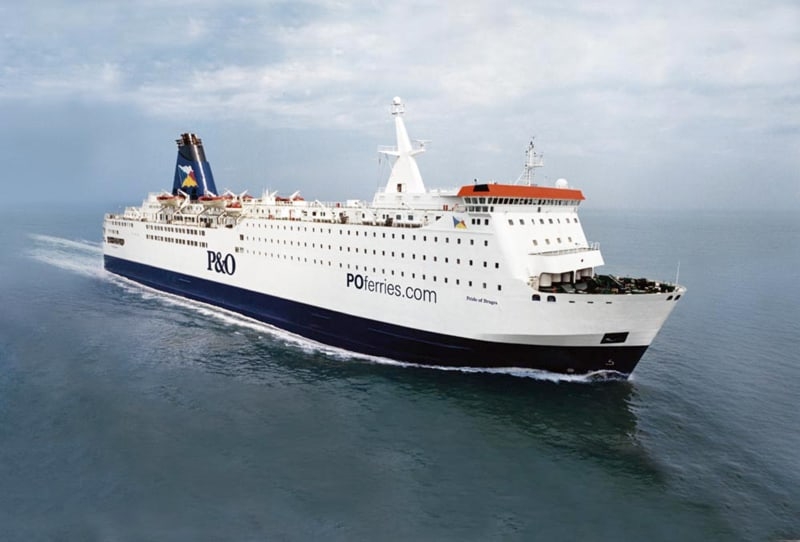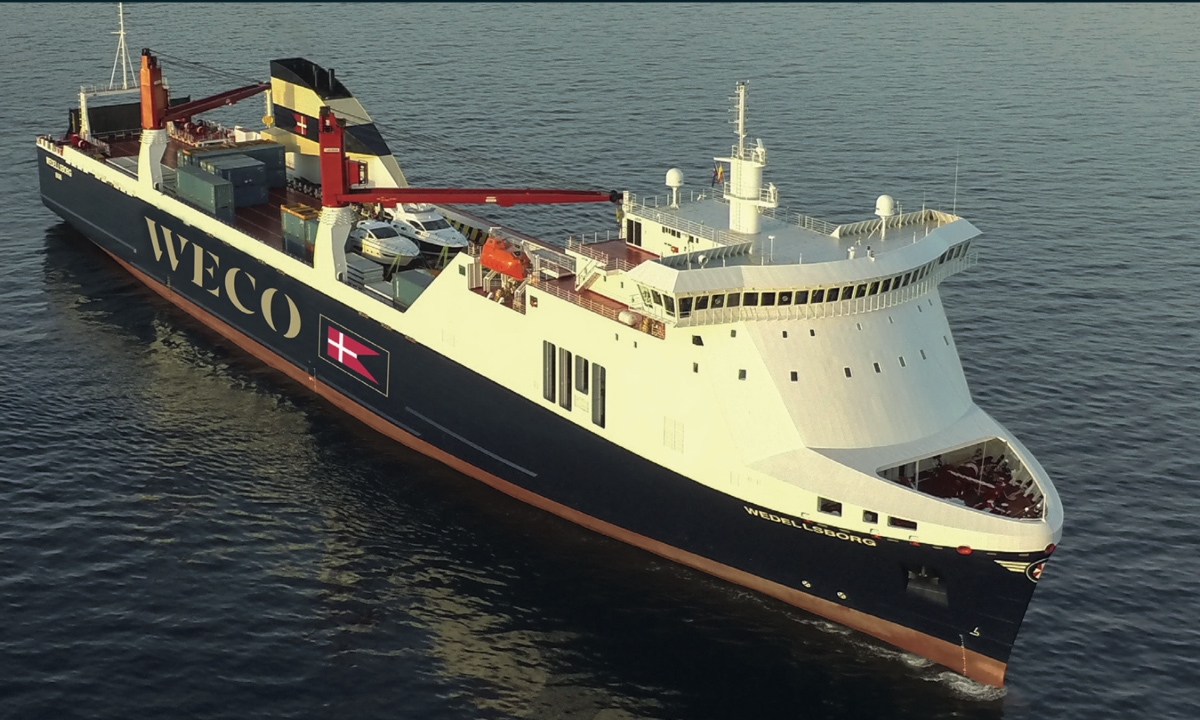A roundup of some of the news from the ferry industry in recent weeks.
Viking launches FSTR service with former Larne vessel HSC express, whilst competitor Linda Line sells one of their craft.
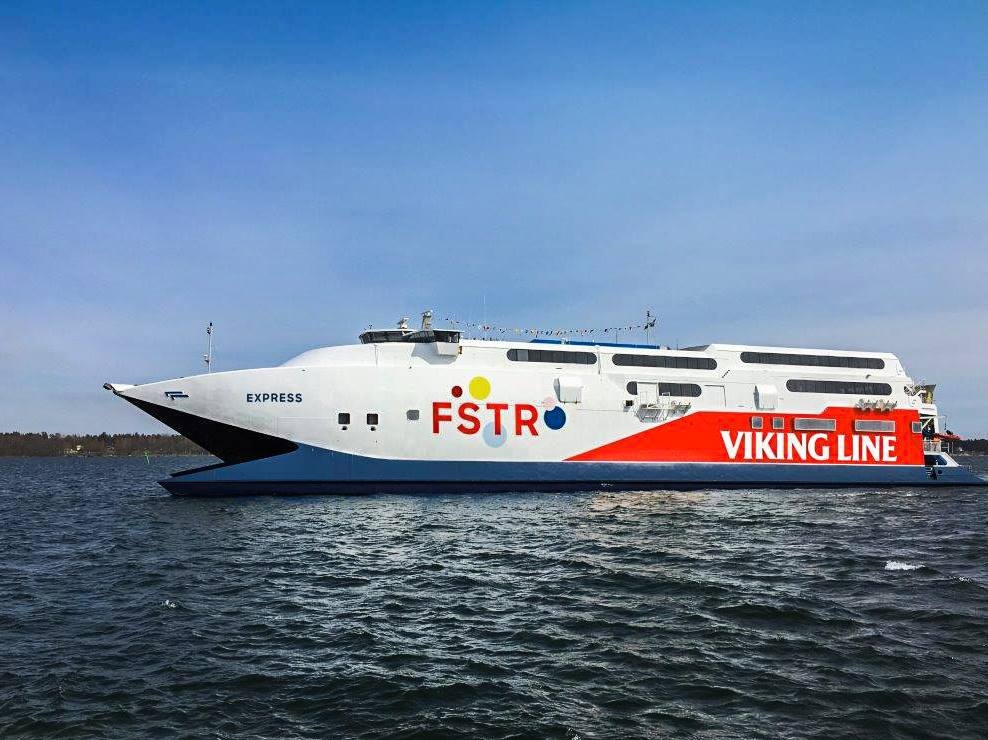
HSC EXPRESS has started the latest chapter of her post-P&O career operating another service in the Baltic, this time for Viking Line as an additional vessel to their fast-conventional RoPax VIKING XPRS on the Helsinki – Tallinn route. Marketed as Viking FSTR (though still officially named EXPRESS), the former P&O vessel is operating the popular route in competition with Tallink’s ‘Shuttle’ service for vehicles and passengers, Eckerö Line who also carry vehicles and passengers on FINLANDIA, and Linda Line, who only carry passengers. The introduction of EXPRESS, which appears to be largely unchanged from her days operating from Larne, appears to be a response to Tallink’s introduction of the brand new MEGASTAR fast-conventional RoPax alongside STAR. Meanwhile, Linda Line have sold one of their 2 passenger catamarans, MERLIN, for further service in South Korea. The sale of the vessel has further fuelled speculation that Linda Line (who are said to be in financial trouble) could be a casualty of the introduction of Viking FSTR, though the company have previously said they intend to replace MERLIN with another vessel to operate alongside their remaining catamaran KAROLIN.
Viking Line Viking XPRS information sheet
Viking Line order new Chinese built cruiseferry.
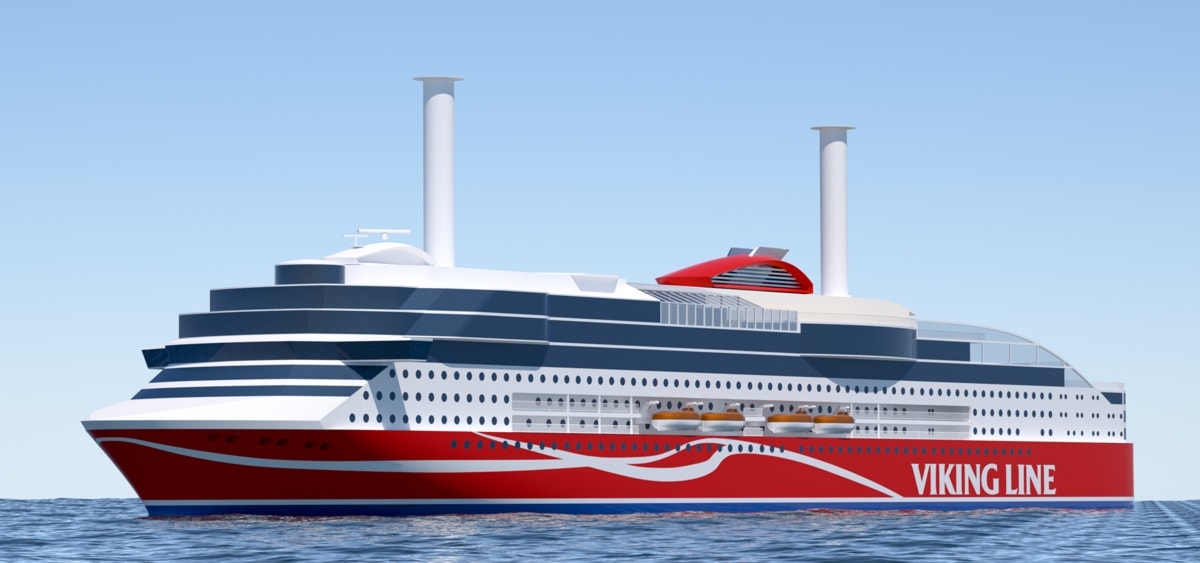
On April 5th, Viking Line announced they had signed a conditional agreement with Chinese shipyard Xiamen Shipbuilding Industry Co. for the construction of a new passenger cruisferry for the Turku (Finland)– Åland Islands–Stockholm (Sweden) route. The approx. 63,000 GT 218m long ferry is expected to be delivered in 2020. Viking have said they plan to collaborate with several Finnish and European suppliers as part of the project, and will hire Scandinavian architects to design the interiors. They also say that they are planning a brand new experience for the vessels guests, and that energy efficiency and environmental considerations will be very important in planing and building the vessel. The total contract amount is around €194m (and includes the option of another vessel) and is subject to board approval.
P&O get Irish Sea dry docking period underway
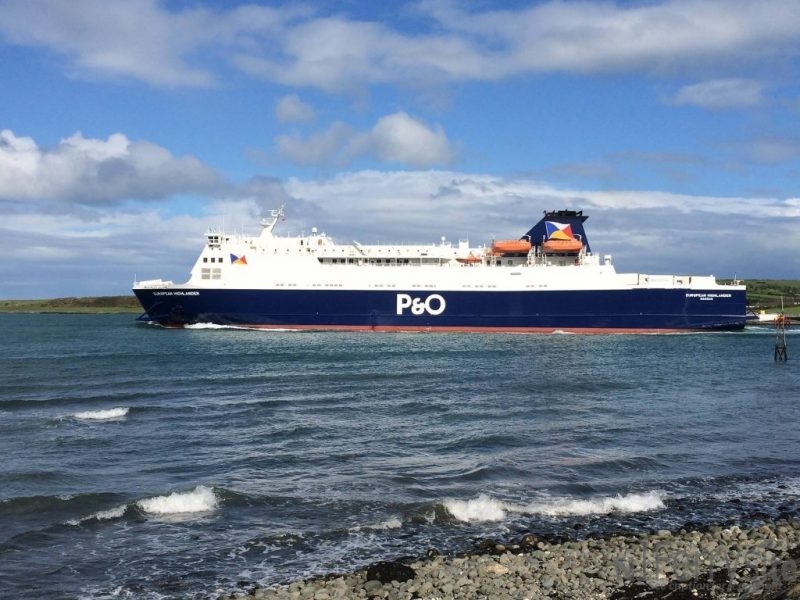
The P&O Ferries 2017 Irish Sea dry docking’s are underway, with NORBANK the first to visit Cammell-Laird. In total 4 ships will visit the Merseyside shipyard: Dublin-Liverpool based NORBANK and NORBAY, and Larne – Cairnryan vessels EUROPEAN CAUSEWAY and EUROPEAN HIGHLANDER. Neptune Lines RoRo vehicle carrier NEPTUNE AEGLI returns again this year to cover on the Dublin route, whilst P&O have confirmed Dover based freighter EUROPEAN SEAWAY will debut at Larne as the relief vessel for EUROPEAN CAUSEWAY and EUROPEAN HIGHLANDER from the end of April to the start of June. In previous years the relief vessel had been NORBAY.
First steel cut for Irish Ferries new ferry
Irish Continental Group (ICG) and Germany’s Flensburger Schiffbau-Gesellschaft (FSG) shipyard have announced that the first steel for the new RoPax for ICG subsidiary Irish Ferries (yard number 771) has been cut. Eamonn Rothwell, Chief Executive of Irish Continental Group Plc and Andrew Sheen, Managing Director of Irish Ferries visited the German shipyard on Friday 7th April to oversee the cutting of the first steel to be used in the construction of the €144m ferry. The delivery of the 194.8m long vessel is expected to take place in mid-2018. The vessel itself was designed by FSG in collaboration with Irish Ferries. Denmark based OSK-ShipTech and their subsidiary Steen Friis Design have been awarded the contract for the interior design, whilst Poland’s Marine Project/Gdansk Shipyard Group are to prefabricate flat sections for the main superstructure. It is expected that Irish Ferries will replace the chartered Visentini RoPax EPSILON with the new-build when she arrives. EPSILON currently operates between Dublin and Holyhead during the week and from Dublin to Cherbourg (France) at weekends.
Former Hengist/Stena Hengist beached
The former British Rail ‘Sealink’ ferry PANAGIA TINOU (ex Hengist, Stena Hengist, Romilda, Apollo Express 2, etc) was built for the Folkestone – Bolougne route, though had been designed with future use on the Belfast-Heysham route in mind should the Channel Tunnel be constructed. In the event her English Channel career outlasted the Sealink Belfast – Heysham service, and she was disposed of before the ‘Chunnel’ opened in 1994. Hengist did however operate from Northern Ireland for a while. As Stena Hengist she operated between Larne and Stranraer in 1992 as the refit relief vessel, after which she was sold by Stena for further operation in Greece with GA Ferries.
Hengist will be remembered by most as the ferry blown aground near Folkestone on the night of the Great Storm in 1987 and surviving despite being impaled and holed with her propellers and rudders partially buried. In the process she was responsible for one of the most memorable images of the aftermath of that storm.
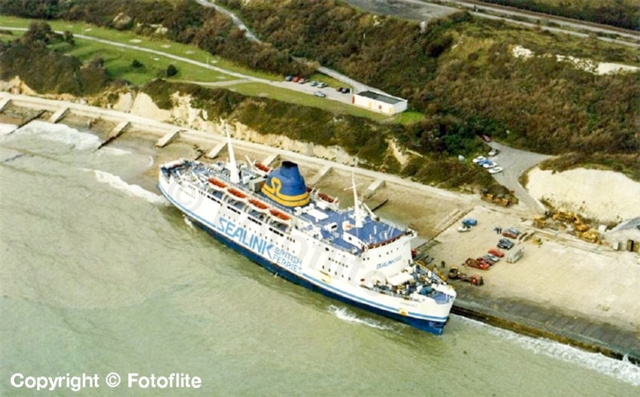
The 16th of October this year would have been the 30th anniversary of her running aground. However, having already partially sunk to the seabed last year and then been re-floated, it was perhaps inevitable the now 45-year-old vessel wouldn’t survive to see the 30th anniversary of the event which made her so famous. PANAGIA TINOU was beached at Aliaga (Turkey) at the end of March.

Viking ADCC finally looks set to be completed, 9 years after construction started.
The as yet unnamed VIKING ADCC (All-seasons Day Cruising and Commuting), the ship Viking Line ordered from Astilleros de Sevilla 2007 but cancelled in February 2010 due to delivery date (March 2009) having been missed, has finally found a new owner. Trasmediterránea (part of the Acciona Group) have agreed the finance to buy and complete the ship at the Factorías Vulcano shipyard in Vigo. Although agreement has been reached, the contract itself is not expected to be signed until after Easter, though this is understood to be a formality.
The hull itself was only launched in 2013 with large sections of superstructure still missing, after owner Banco Santander arranged for it to be completed with Factorías Vulcano. When Viking had cancelled the vessel it was far from completion, with sections of the hull yet to be welded together, engines yet to be installed, and the propeller shafts still in the Netherlands!
Astilleros de Sevilla themselves were declared bankrupt in 2011, and it is understood that workers from Factorías Vulcano completed the hull at Seville so it could be floated to Vigo for the construction of the vessel to be finally completed. Completion is now said to be around mid-2018, and the agreement appears to be a lifeline for workers at the Vulcano yard, which itself is said to be in some difficulty. Other operators said to have expressed and interest in completing the vessel range from Viking Line themselves to Stena Line.
P&O to add third ship to Hull – Zeebrugge, but it might not be what many people would expect!
Reports from Holland and Belgium state that P&O are to add a third vessel to keep up with demand on the Hull – Zeebrugge route, however it looks as though it may be a small LoLo (lift-on-lift-off) vessel rather than the RoRo that would normally be expected. The Zeebrugge route is popular for shipments of containers and tanks which need to be lifted on to trailers in order to be shipped at present, so such a vessel may make a lot of sense. At present the route is maintained by near-sisters PRIDE OF YORK and PRIDE OF BRUGES.
UPDATE 18/4/17: P&O today announced/confirmed (external link) that they will be adding the 118m long 5000 gt container ship ELISABETH to the Hull – Zeebrugge route from next month.
Weco RoRo ceases operations, making their vessels available to other operators
Weco have announced that they are cease operations at their cross-Atlantic RoRo subsidiary Weco RoRo (formerly Nordana), citing continual heavy losses. The move means that their two Visentini RoRo vessels WEDELLSBORG and FRIJSENBORG, which are chartered from Visemar (a Visentini group company), have become available to other operators. The announcement follows a separate announcement by Stena Bulk that they had acquired Weco’s 50% stake in Stena Weco, and means that Danish based Weco Shipping has been reduced from 5 companies to 3 (Weco Tankers, Weco RoRo, Weco Projects).
WEDELLSBORG has already been repainted in Tirennia (now part of the Moby group) livery, whereas FRIJSENBORG is in Algeria having just finished service with Weco RoRo on Tuesday. There has been speculation that the latter may go to Airbus or even join her sister at one of Moby Line’s companies. WEDELLSBORG and FRIJSENBORG were constructed in 2014 and 2016 respectively by Italy’s Cantiere Navale di Visentini. They share a similar hull form with other Visentini built vessels such as their RoPax series, but also have cranes fitted to their open decks for lifting cargoes onboard.
| ShipSpotting.com |
 |
| © Emmanuel.L |
Stena withdraw from Black Sea partnership
Swedish ferry operator Stena Line announced on the 3rd of April that they are withdrawing from their Black Sea joint-venture with SeaLine with immediate effect, citing the volatility of the region and problems with the border between Russian and Ukraine.
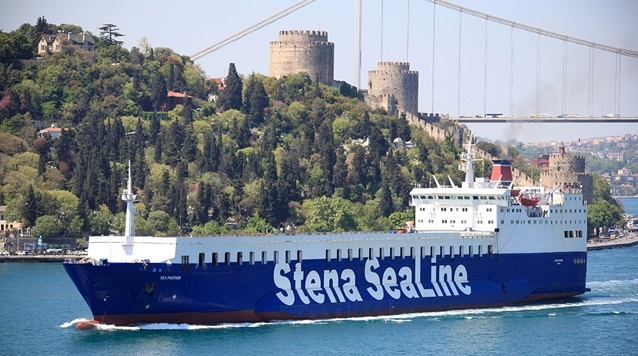
Carl-Johan Hagman, Head of Shipping, Stena said: “The volatility in the region and especially the problems at the border between Russia and Ukraine, force us to focus our efforts on other projects. We wish Joe Lindbom, Managing Director SeaLine and the owner Johan Eklund the best of luck in the further development of the route”.
The companies had operated the service between Chornomorsk (previously known as Ilyichevsk, in the Odessa region, Ukraine) with Haydarpasa (Turkey) together using SEA PARTNER, one of the 11 sister vessels in the Stena SeaRunner class built by Hyundai in South Korea in the late ’70s.
